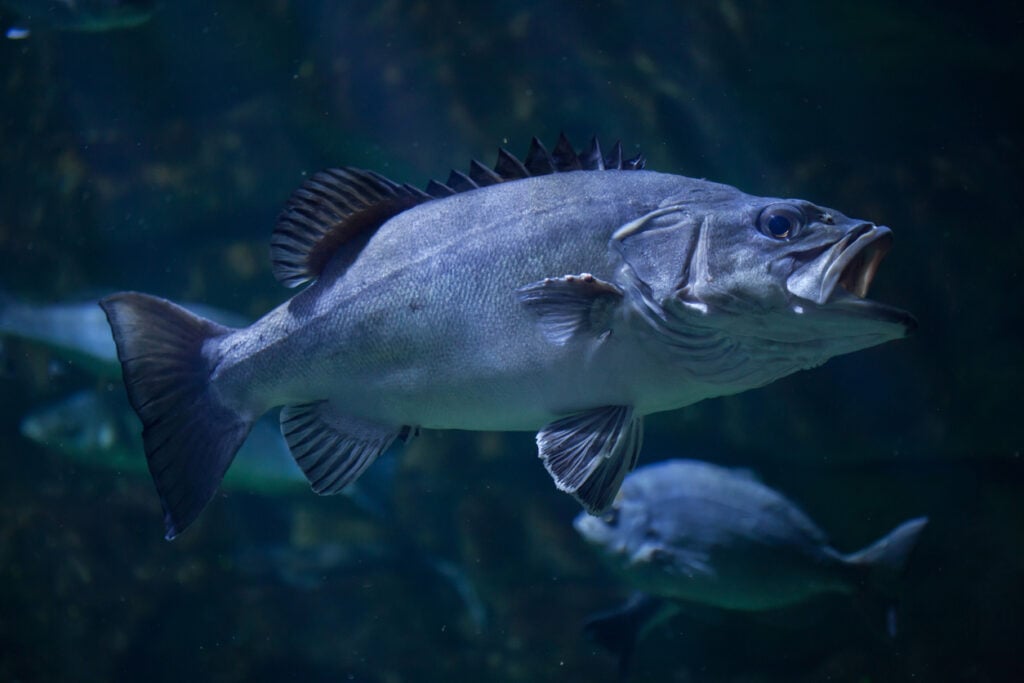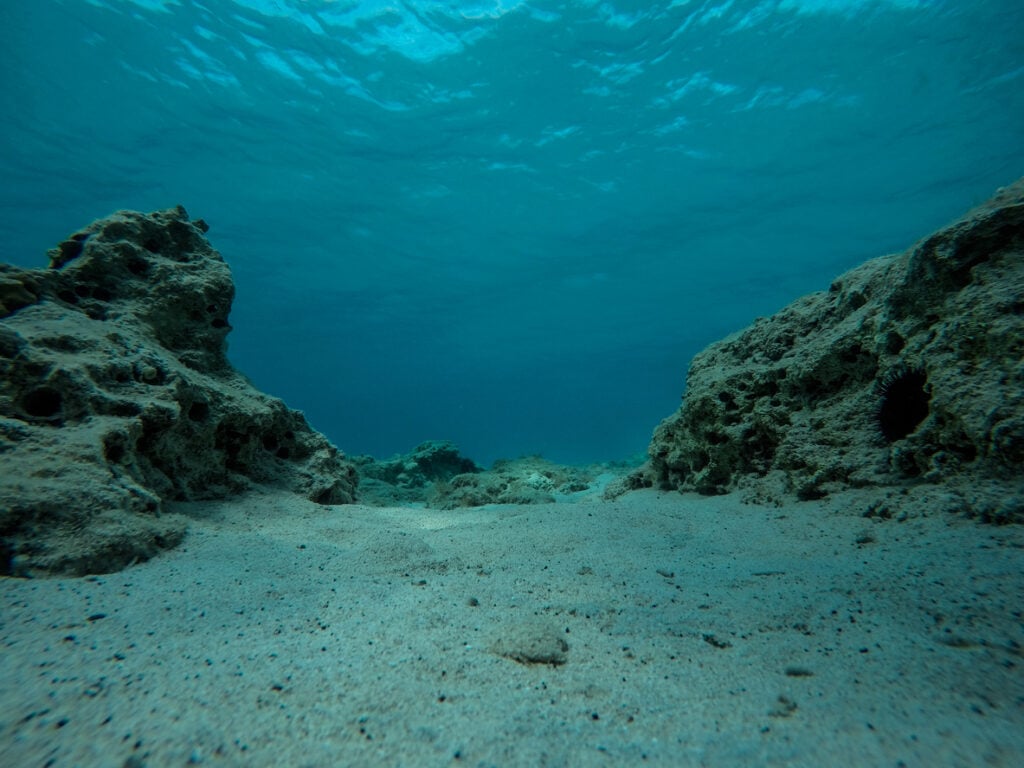The Atlantic wreckfish (Polyprion americanus),or stone bass as it’s perhaps more commonly known, is a large species of deep-swimming fish that’s found – rather confusingly given its name – in a handful of oceans across the globe. It also happens to be one of the biggest and most striking members of the Ocean Floor exhibit here at Bristol Aquarium, so you’re sure to encounter it as part of your visit.
But before you meet the mighty stone bass, it’s worth finding out a few facts about it. After all, it’s always good to be able to recognise the fish you’re gawking at, not to mention impress your friends and family with your knowledge of the various species on display.
So, what do you need to know about the Atlantic wreckfish? Here are15 facts to commit to memory ahead of your trip to Bristol Aquarium.
1. Atlantic wreckfish live among caves and shipwrecks. Hence their name! In fact, even the moniker “stone bass” is derived from the fact that these fish love living among rocks and stones on the seafloor.
2. Stone bass grow over two metres long! That’s right – these are the real big boys of the ocean floor, with Atlantic wreckfish recorded at lengths in excess of two metres. That might go some way to explaining our next fact…

3. Fully grown Atlantic wreckfish have no known predators. Yep, wreckfish of this size are simply too formidable a target for most of the ocean’s top predators, so they’re generally left alone. They are, of course, preyed upon when they’re young, hence why they swim in shoals until they reach a certain age and size.
4. Wreckfish can live nearly 100 years. That means there’s every chance that the stone bass you see at Bristol Aquarium will be older than you! With no natural predators, these cold-water swimmers live extraordinarily long lives, typically up to the mid-90s and sometimes beyond.
5. Atlantic Wreckfish are what’s called a “bathydemersal” species. That means they spend most of their lives at a depth of around 200 metres.
6. Adult stone bass weigh a staggering 100kg. To put that into perspective, it’s roughly the same weight as a newborn baby elephant!
7. Despite their name, the Atlantic isn’t the only place you’ll find this species of wreckfish. In fact, they range across several oceans, including the Atlantic, the Pacific, and the Indian. This makes sense given that stone bass are oceanodromous – the science-y term for migratory.
8. Atlantic wreckfish are solitary swimmers. They spend much of their adult lives alone, but do congregate in large groups during the summer breeding season.
9. Stone bass have a fairly varied diet. They typically feed on fellow bottom-dwellers like fish, cuttlefish, squid, and other large crustaceans, but have also been known to devour octopuses and sharks.

10. They’re super-opportunistic hunters. That’s right, the Atlantic wreckfish will take a meal anywhere it can get it. Thanks to their huge mouths, these fish are able to swallow their prey whole, which is handy when you typically eat on the fly.
11. Atlantic wreckfish are part of the ‘Polyprionidae’ family. The name, which applies to several species of wreckfish, is derived from the Greek ‘poly’ meaning ‘many’ and ‘prion’ meaning ‘saw’. This last part is in reference to the fish’s distinctive fins, which appear sharp and spiny.
12. They may not look it, but stone bass are very colourful. Sure, they might look bog-standard at first glance, but take a closer look and there are all sorts of hues running through their sturdy scales. For instance, their backs and flanks appear dark brown in colour, while their underbellies are yellow. However, in a certain light, they appear bluish-grey, with a silvery sheen that’s difficult to miss.
13. Atlantic wreckfish numbers aren’t currently threatened. That’s according to the International Union for the Conservation of Nature (IUCN). However, concerns have been raised about their numbers in the Mediterranean, where overfishing is taking a toll on migratory stone bass populations.
14. The stone bass is a common fixture of the UK coastline. It’s found all around Britain and Ireland, although it’s rarely encountered by anglers due to the deep water in which it dwells.
15. Atlantic wreckfish may be solitary, but they’re very curious about humans. Yes, it’s a little-known fact, but wreckfish are surprisingly inquisitive and have been recorded approaching divers in the wild. Even here at Bristol Aquarium, our stone bass have been known to swim close to the glass, so you can expect an up-close encounter.
We hope you’ve enjoyed this whistle-stop introduction to the impressive Atlantic wreckfish. To see this formidable specimen in the flesh, along with hundreds of other fascinating marine animals, book your tickets to Bristol Aquarium today.
